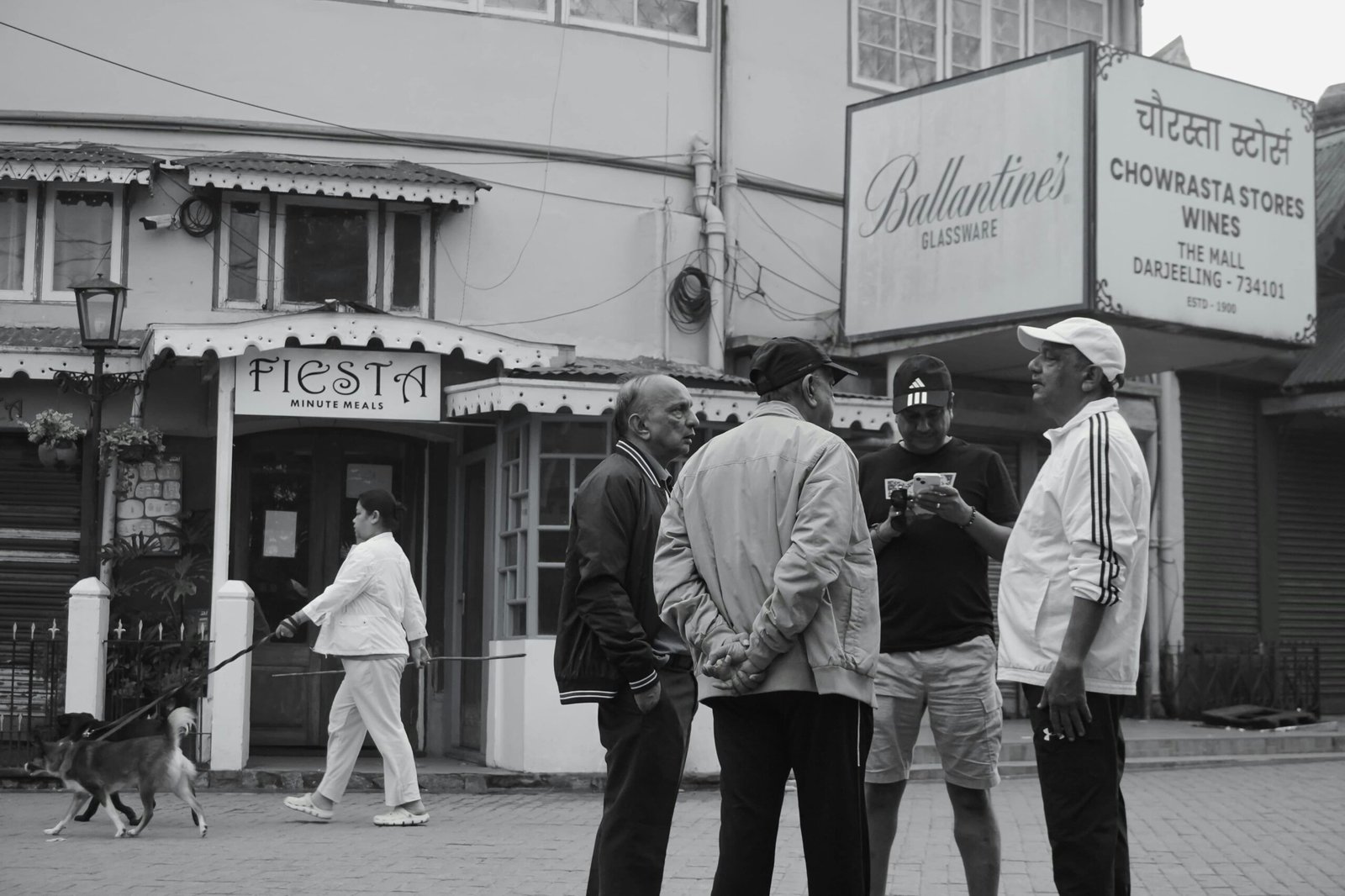
Words & Photography: Madhu Chaudhary // Additional Photography: Anima Biswal
Roads That Refuse to Be Straight
On the map, the route looked deceptively simple: Bagdogra to Darjeeling, then onward to Pelling, Gangtok, Kalimpong, before circling back. But mountains do not know straight lines. They twist and fold upon themselves, like ancient riddles unwilling to be solved. Clouds drifted across our path without warning, hiding valleys, revealing sudden glimpses of snow-dusted peaks. Time itself seemed elastic here — mornings stretched, evenings dissolved in a blink.
Sonam, our driver, knew the rhythm well. He started the engine before dawn each day, headlights cutting through fog, his hands steady on the wheel. One morning, with eyes fixed on the next bend, he said quietly:
Anima scribbled the line instantly. Some truths are meant to travel with you forever.
Darjeeling: Steam, Silence, and a Prayer Without Words
The Toy Train groaned and whistled its way towards Ghum, steam rising in ghostly spirals. From its window, the hills revealed themselves in flashes — pastel houses clinging to slopes, children in uniforms waving at strangers, tea bushes curving like green waves. Built in the 1880s, the Darjeeling Himalayan Railway is a UNESCO World Heritage Site, an engineering marvel that climbs nearly 7,000 feet using loops and zig-zag reverses instead of tunnels. It was once nicknamed the “toy train”because of its small engines and narrow gauge.
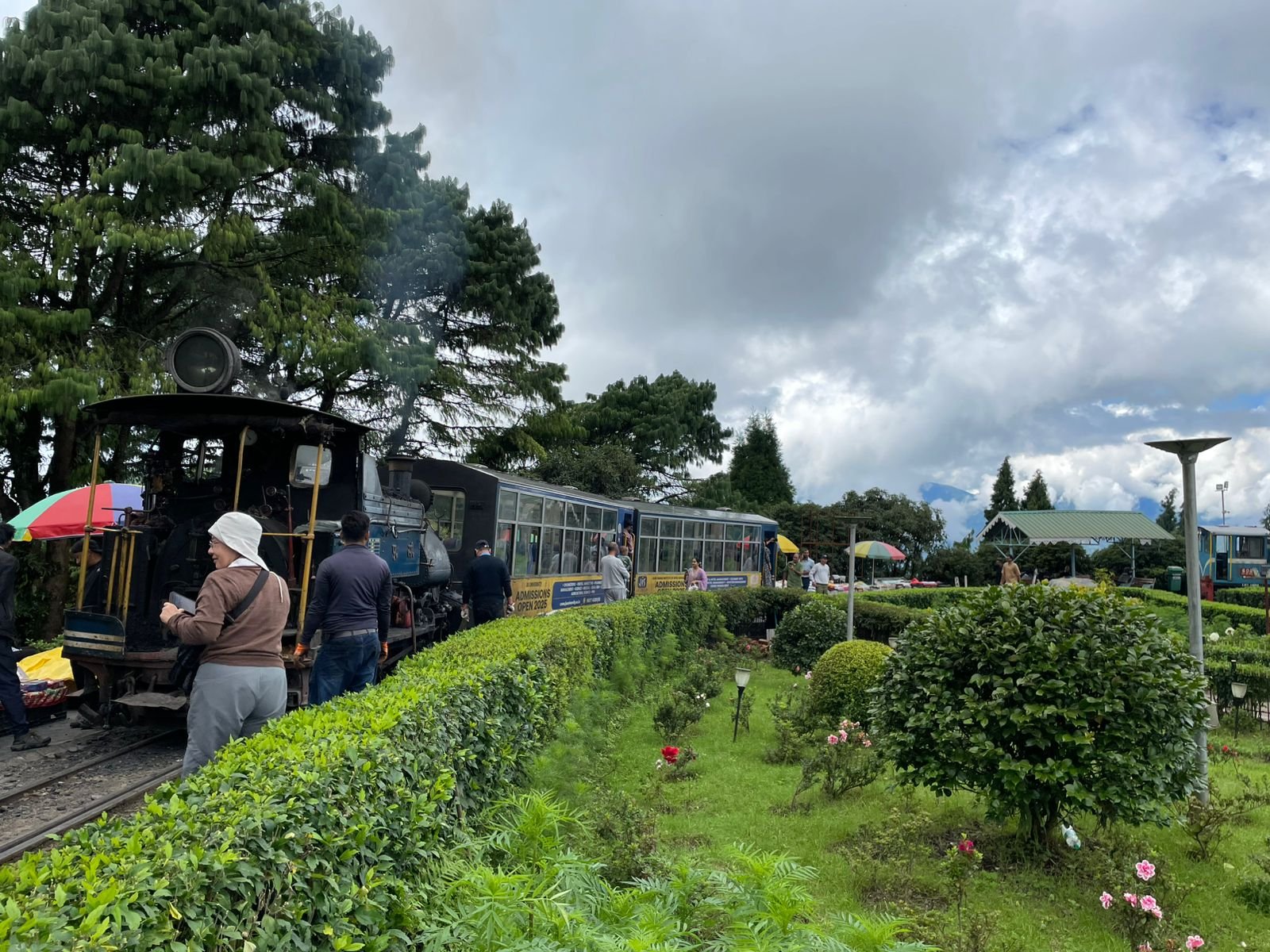
“Feels like another century,” Madhu whispered, her smile carrying the wonder of a child.
At Happy Valley Tea Estate, women bent low among the bushes, plucking leaves with practised grace. Established in 1854, it is one of Darjeeling’s oldest estates, still producing some of the most sought-after teas in the world. The guide spoke of Victorian parlours and distant ships, but it was the sound of baskets filling — soft, unbroken — that lingered with us.
Later, the Japanese Temple held us in stillness. Built by Nichidatsu Fujii, a disciple of Mahatma Gandhi, the Temple was part of his global mission to spread peace through Buddhist chanting and prayer. Chants rose and fell in unison, a drum marking the rhythm of devotion. Phones were forbidden, so every note etched itself straight into memory.
Sometimes, prayer doesn’t need translation.
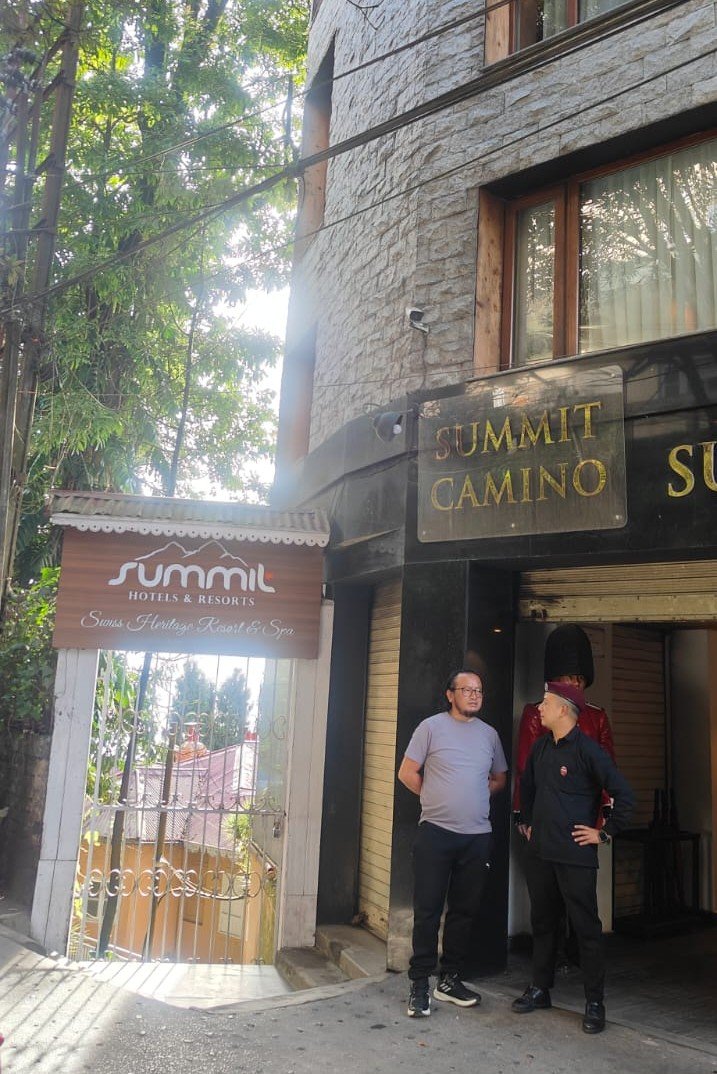
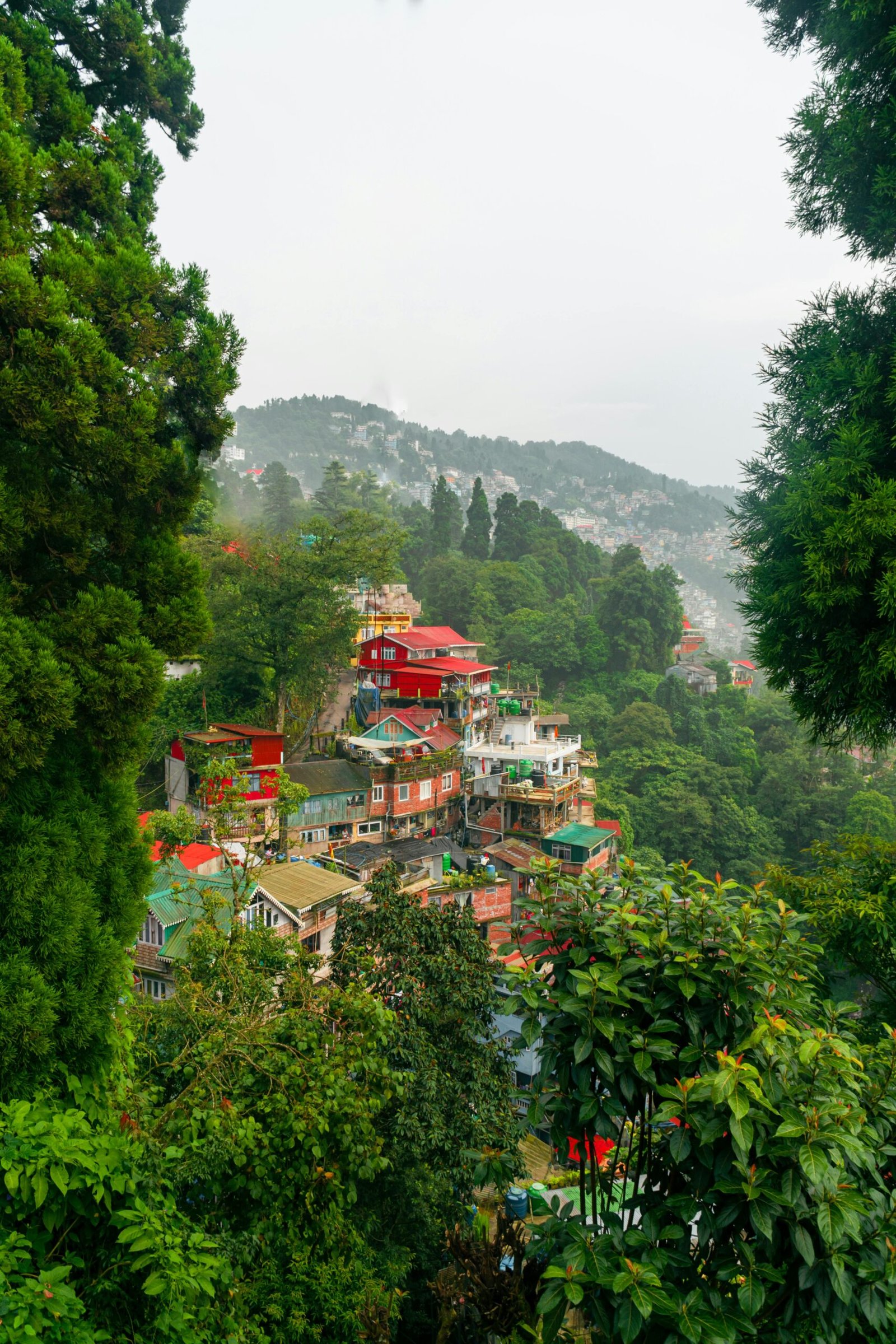
Pelling: Between Glass and Dust
The Chenrezig Glass Skywalk stretched out into the void. Beneath us, transparent panels revealed the drop — a plunge into air that made my stomach tighten. But Madhu walked ahead slowly, her gaze fixed on the mountains rising like painted scrolls. The skywalk is India’s first glass-bottom bridge, built at a height of nearly 7,200 feet, overlooking the world’s tallest Chenrezig statue — the Bodhisattva of Compassion. It was inaugurated in 2018, but it already feels timeless, suspended between devotion and daring.
Nearby, volunteers scrubbed temple steps, their hands moving with patient devotion. No one hurried. No one looked for acknowledgement. Sonam watched for a moment and said softly:
That image — of hands polishing stone — stayed with us longer than the shining bridge.
At Pemayangtse Monastery, founded in 1705, the walls were rich with murals, and the faint smell of incense lingered. The monastery belongs to the Nyingma order of Tibetan Buddhism. It houses the famed Sangtok Palri Zangdog — a seven-tiered wooden model of a celestial palace, carved by a single lama over the course of five years. At the Orange Garden, fragrance filled the air, citrus sweetness mingling with the mountain breeze. It was a farewell painted not in words, but in colours and scents.
Anima closed her notebook and smiled.
“We travel to collect stories,” she said. “Today, the stories collect us.”
Gangtok: Where Culture Layers Itself
Gangtok unfolded in contrast. At Rumtek Monastery, the air was thick with incense, the halls echoing with deep chants. Initially built in the mid-1700s, it was rebuilt in 1966 by the 16th Karmapa after he fled Tibet, and today it serves as the main seat of the Karma Kagyu lineage in exile. At Do Drul Chorten, pilgrims circled the stupa, spinning 108 prayer wheels that rang with the metallic murmur of mantras. It enshrines sacred relics and is considered one of the most powerful stupas in Sikkim.
Inside the Institute of Tibetology, manuscripts and thangkas rested in hushed rooms. It is one of the largest repositories of Tibetan culture in the world, preserving knowledge that might have otherwise been lost with Tibet’s occupation.
And then suddenly — Banjhakri Falls. Water thundered down rock cliffs, named after the ban jhakri, or “forest shaman,” of Sikkimese legend — spirits who were said to train shamans in their craft.
Later, at the Cottage Industry of Handicraft and Handloom, colours filled the halls — reds, saffrons, indigos, threads woven into Lepcha patterns. A craftsman explained how each motif carried meaning. Madhu touched a design with her fingertips and whispered:
Kalimpong: A Quirky Farewell
Kalimpong arrived like a long exhale. The town stretched out without hurry, its streets quieter, its pace gentler. At Pine View Nursery, rows of rare cacti stood in strange contrast to the misty hills, their spines catching the light. With over 1,500 species, it is one of the largest cactus collections in Asia.
The morning took us to Durpin Monastery, built by the Dalai Lama himself, its white walls glowing in fading light. From Deolo Park, the highest point of Kalimpong, the panorama stretched across the Teesta River valley.
The Voice of the Road
Every journey has a voice. Ours belonged to Sonam. Between bends, he told us about his childhood, about lottery tickets that everyone quietly bought, about lakes whispered to be sacred, about hills that carried hidden stories.
One evening, outside the Japanese Temple, as clouds drifted like slow-moving prayers, he said quietly:
“We clean the same steps monks do. We touch the same dust of the earth. Maybe that is our prayer.”
We exchanged a glance and let the silence remain. Some truths are complete without reply.
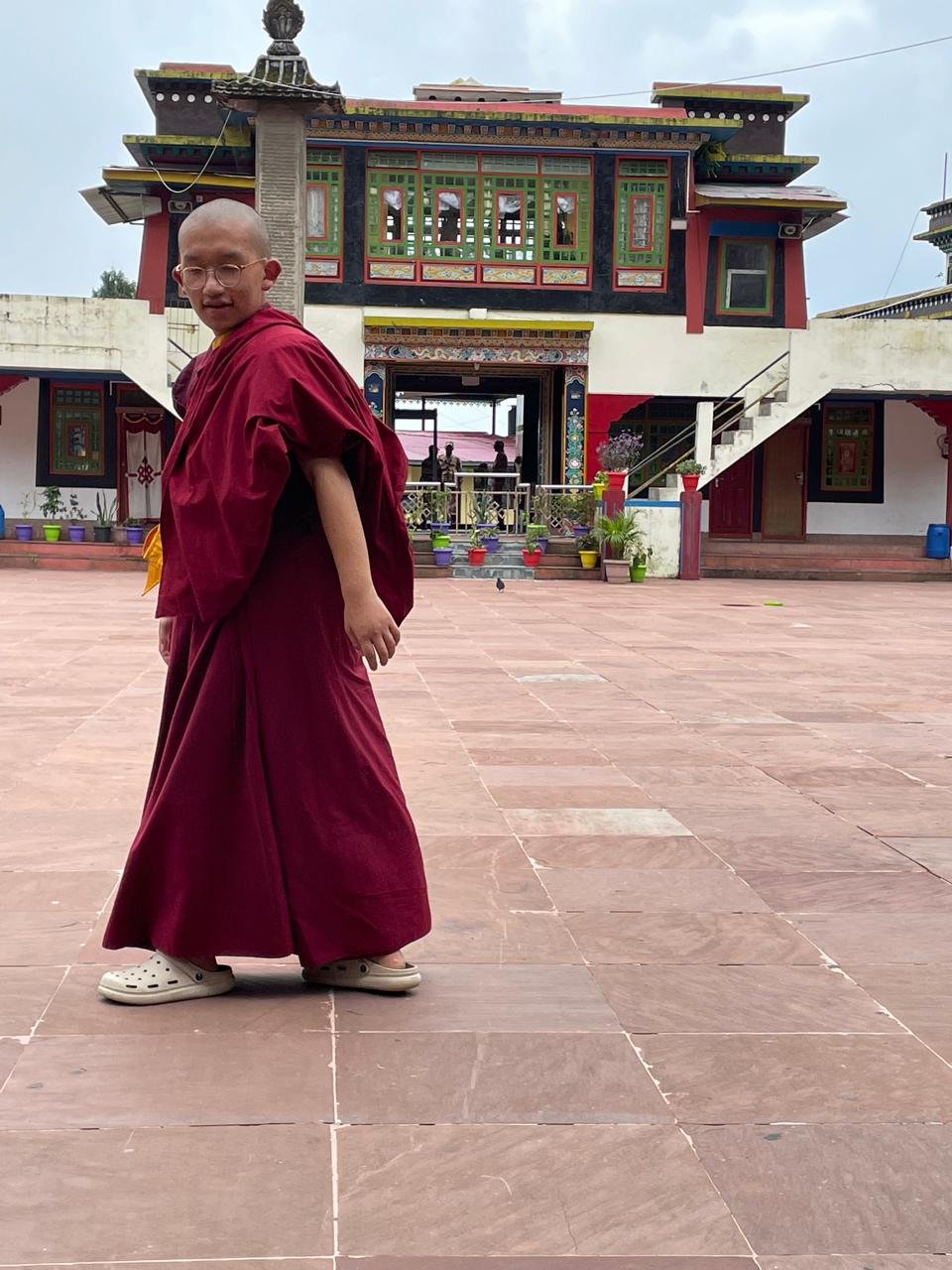
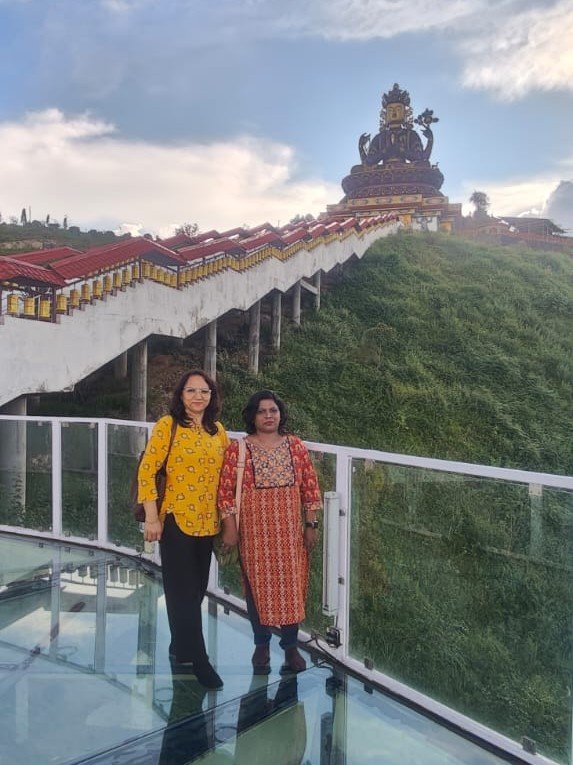
What the Hills Gave Back
By the end of the week, Bagdogra pulled us back into the plains. Our bags were filled with souvenirs, our notebooks fat with scribbles — but the real weight of the journey was invisible. We carried mist-drenched mornings. The steady beat of chants. The kindness of strangers. And Sonam’s calm voice guided us through roads that bent and twisted, but never betrayed us.
Ruskin Bond once wrote:
Perhaps that is the truth. We arrived as visitors, wandered as travellers, and somewhere on those winding paths, the hills quietly claimed us.
This is an excerpt from the field notes of the Immerse India team’s 2025 journey to the hills of North East, shared as part of our Immersive Experiences Series.
Words & Photography: Madhu Chaudhary
Additional Photography: Anima Biswal
Copyright belongs to the authors. All rights reserved.